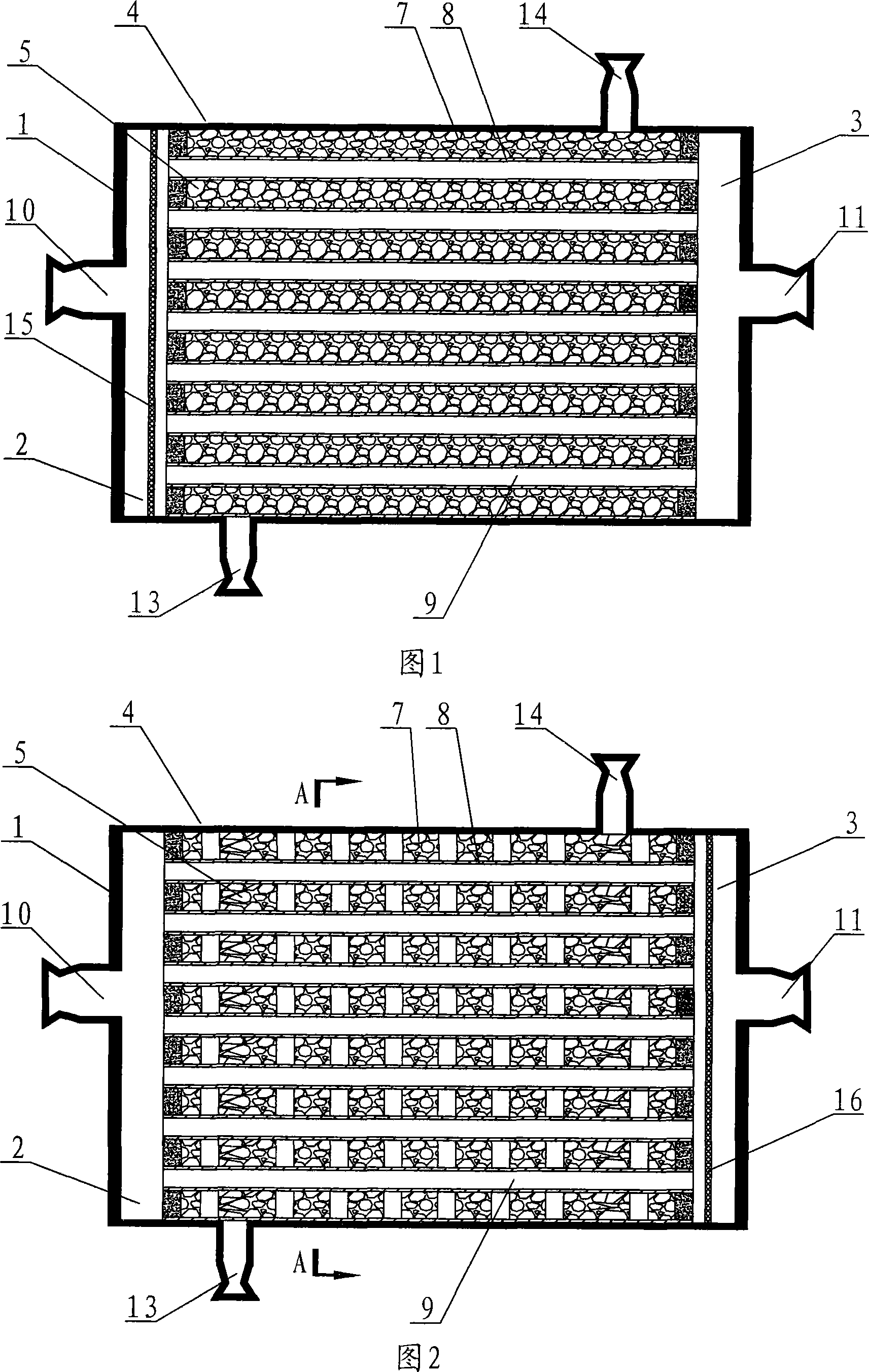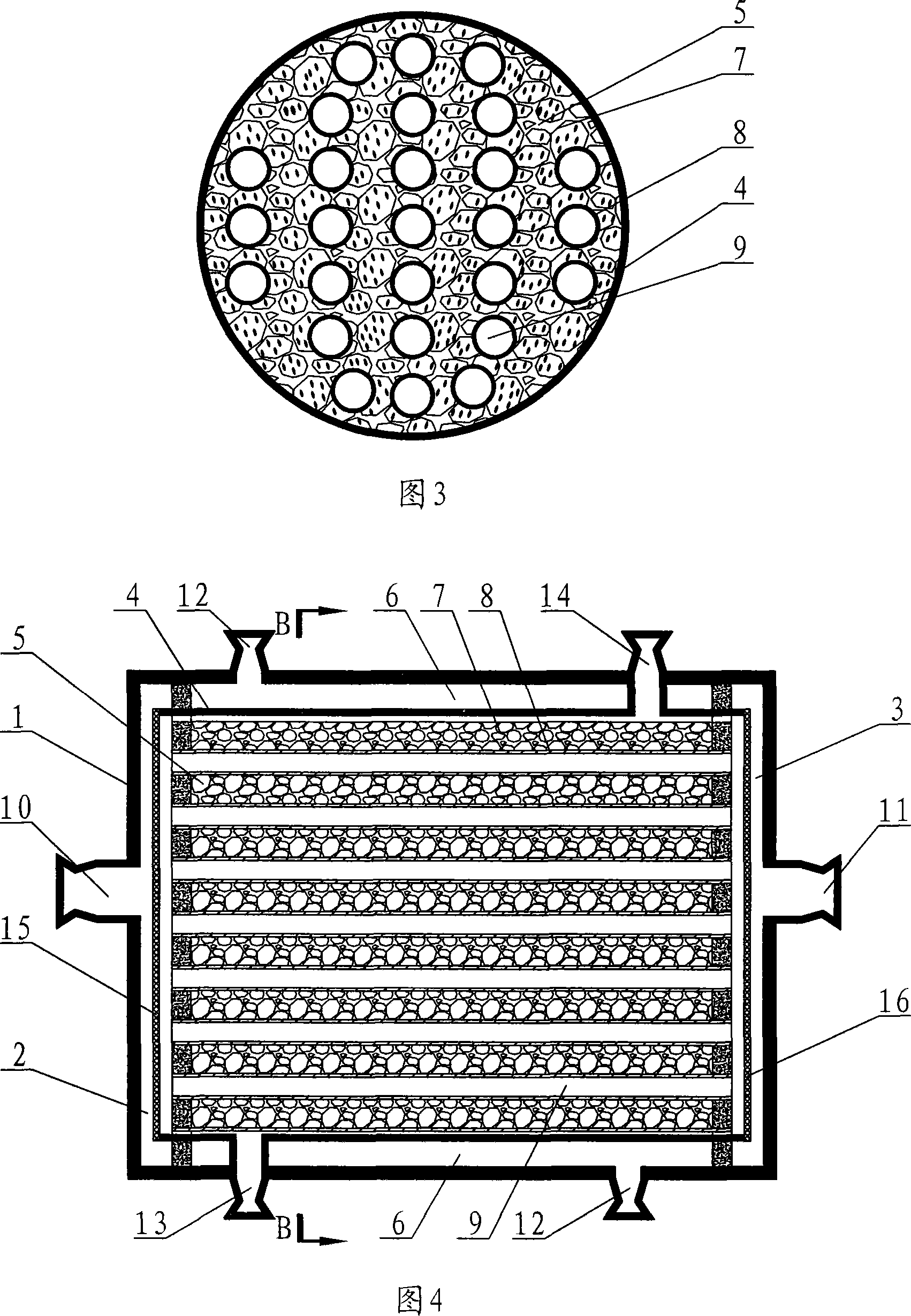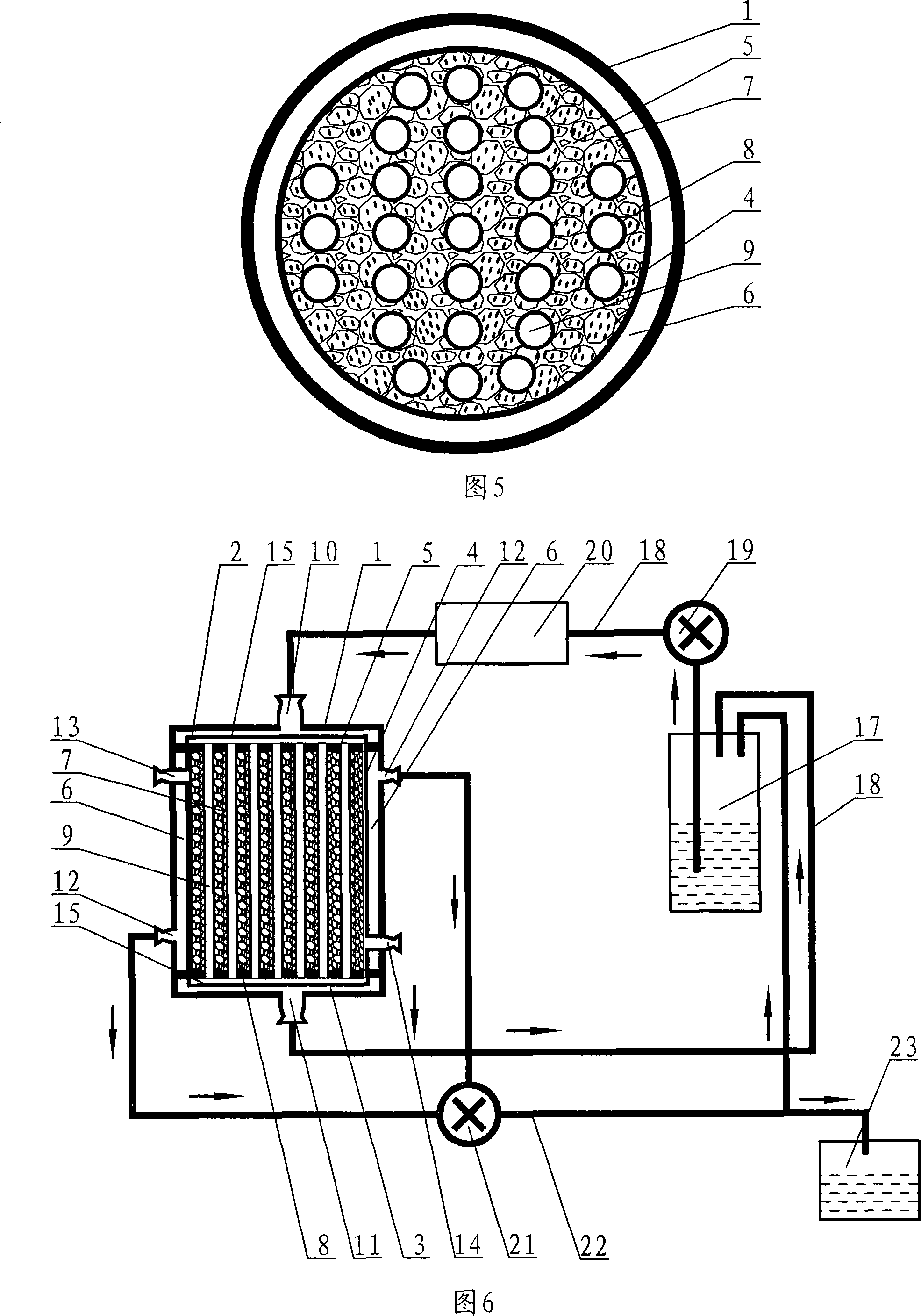Three-dimensional liver cell culture bioreactor
A bioreactor, three-dimensional technology, applied in biochemical instruments, biochemical equipment and methods, tissue cell/virus culture devices, etc., can solve the problems of unfavorable patients' immune safety, inactivation, and difficulty in further improving the efficacy of liver failure. , to achieve the effect of good artificial liver support and treatment, reasonable structure and excellent biological function
- Summary
- Abstract
- Description
- Claims
- Application Information
AI Technical Summary
Problems solved by technology
Method used
Image
Examples
Embodiment 1: pic 1, 3 75。 Embodiment 2
[0038] Embodiment 1: As shown in FIG. 1 , the three-dimensional porous scaffold material 7 can fill the entire cell culture cavity 5 . Embodiment 2: As shown in Figures 2 and 3, the three-dimensional porous scaffold material 7 can also be arranged in the cell culture chamber 5 in this way: the multilayer three-dimensional porous scaffold materials 7 are distributed in the cell culture chamber 5 sequentially at a distance from each other, And each layer of three-dimensional porous scaffold material 7 is filled with the corresponding cross-section of the cell culture cavity 5 .
[0039] The invention can be used for culturing hepatocytes, can also be used for bioartificial liver in vitro, and can also be used for experimental research and preparation of biological preparations.
[0040] The method for culturing hepatocytes with the present invention is:
[0041] 1. Place the patent of the present invention in the cell culture box, and give 95% oxygen, 5% carbon dioxide and 100%...
Embodiment 3
[0049] Embodiment 3: Outside the cell culture chamber 5, a radial flow chamber 6 covering the cell culture chamber 5 is provided. The walls of the cell culture chamber 5 are all made of cellulose isolation membrane 4. 6 communicate with each other through micropores on the cellulose isolation membrane 4 , and a radial liquid outlet 12 communicating with the radial flow chamber 6 is provided on the body of the radial flow chamber 6 . Realize the concrete structure of this embodiment as shown in Fig. 4, 5, and it is to be respectively provided with inflow cavity 2 and outflow cavity 3 on the left and right opposite sides in casing 1, between inflow cavity 1 and outflow cavity 3 A cell culture chamber 5 is formed by the inner wall of the barrel-shaped cellulose isolation membrane 4, the outer wall of the inlet cavity 2, and the outer wall of the outlet cavity 3, the outer wall of the cellulose isolation membrane 4 and the inner wall of the housing 1, the inlet cavity 2 The outer ...
PUM
 Login to View More
Login to View More Abstract
Description
Claims
Application Information
 Login to View More
Login to View More - R&D
- Intellectual Property
- Life Sciences
- Materials
- Tech Scout
- Unparalleled Data Quality
- Higher Quality Content
- 60% Fewer Hallucinations
Browse by: Latest US Patents, China's latest patents, Technical Efficacy Thesaurus, Application Domain, Technology Topic, Popular Technical Reports.
© 2025 PatSnap. All rights reserved.Legal|Privacy policy|Modern Slavery Act Transparency Statement|Sitemap|About US| Contact US: help@patsnap.com



